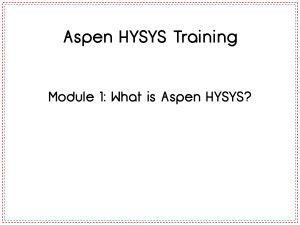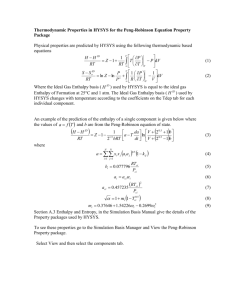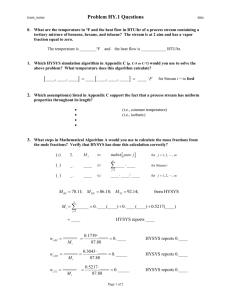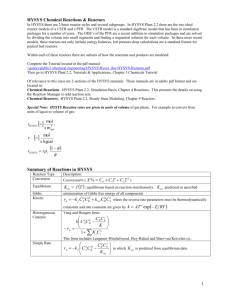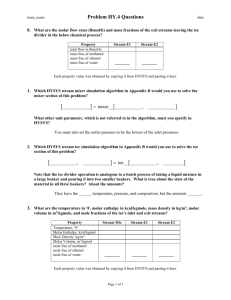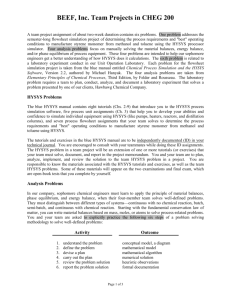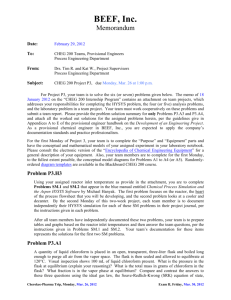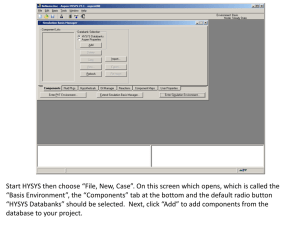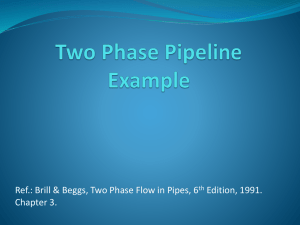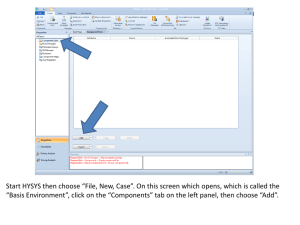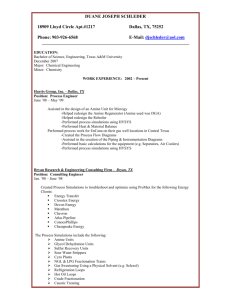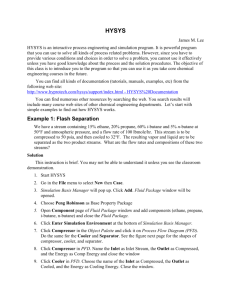Heat exchanger equations for duty
advertisement
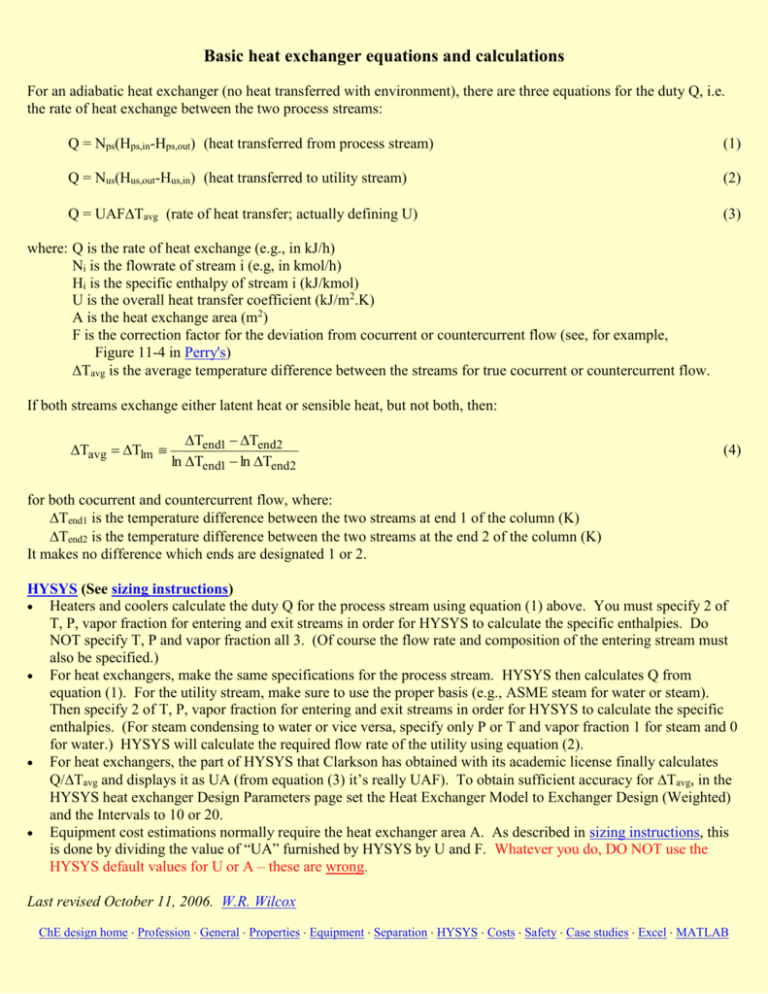
Basic heat exchanger equations and calculations For an adiabatic heat exchanger (no heat transferred with environment), there are three equations for the duty Q, i.e. the rate of heat exchange between the two process streams: Q = Nps(Hps,in-Hps,out) (heat transferred from process stream) (1) Q = Nus(Hus,out-Hus,in) (heat transferred to utility stream) (2) Q = UAFTavg (rate of heat transfer; actually defining U) (3) where: Q is the rate of heat exchange (e.g., in kJ/h) Ni is the flowrate of stream i (e.g, in kmol/h) Hi is the specific enthalpy of stream i (kJ/kmol) U is the overall heat transfer coefficient (kJ/m2.K) A is the heat exchange area (m2) F is the correction factor for the deviation from cocurrent or countercurrent flow (see, for example, Figure 11-4 in Perry's) Tavg is the average temperature difference between the streams for true cocurrent or countercurrent flow. If both streams exchange either latent heat or sensible heat, but not both, then: Tavg Tlm Tend1 Tend2 ln Tend1 ln Tend2 (4) for both cocurrent and countercurrent flow, where: Tend1 is the temperature difference between the two streams at end 1 of the column (K) Tend2 is the temperature difference between the two streams at the end 2 of the column (K) It makes no difference which ends are designated 1 or 2. HYSYS (See sizing instructions) Heaters and coolers calculate the duty Q for the process stream using equation (1) above. You must specify 2 of T, P, vapor fraction for entering and exit streams in order for HYSYS to calculate the specific enthalpies. Do NOT specify T, P and vapor fraction all 3. (Of course the flow rate and composition of the entering stream must also be specified.) For heat exchangers, make the same specifications for the process stream. HYSYS then calculates Q from equation (1). For the utility stream, make sure to use the proper basis (e.g., ASME steam for water or steam). Then specify 2 of T, P, vapor fraction for entering and exit streams in order for HYSYS to calculate the specific enthalpies. (For steam condensing to water or vice versa, specify only P or T and vapor fraction 1 for steam and 0 for water.) HYSYS will calculate the required flow rate of the utility using equation (2). For heat exchangers, the part of HYSYS that Clarkson has obtained with its academic license finally calculates Q/Tavg and displays it as UA (from equation (3) it’s really UAF). To obtain sufficient accuracy for Tavg, in the HYSYS heat exchanger Design Parameters page set the Heat Exchanger Model to Exchanger Design (Weighted) and the Intervals to 10 or 20. Equipment cost estimations normally require the heat exchanger area A. As described in sizing instructions, this is done by dividing the value of “UA” furnished by HYSYS by U and F. Whatever you do, DO NOT use the HYSYS default values for U or A – these are wrong. Last revised October 11, 2006. W.R. Wilcox ChE design home Profession General Properties Equipment Separation HYSYS Costs Safety Case studies Excel MATLAB
